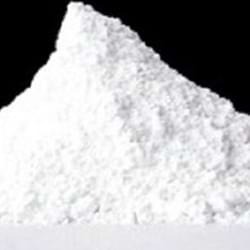IUPAC Name
Dioxotitanium
Cas Number
13463-67-7
HS Code
3206.11.10
Formula
TiO2
Appearance
White Powder
Common Names
Titania; Rutile; Anatase
Packaging
25 Kg PP/PE Bags
Titanium dioxide, also known as Titanium(IV) or Titania, is a simple inorganic compound produced as a pure white powder with the molecular formula TiO2. Generally, it is available in two main crystal forms, which are rutile and anatase. Anatase is economical, easily dispersed in water-based systems, and a perfect opacifier. Untreated titanium dioxide (anatase) has TiO2 with a refractive index of 2.55. However, it is not commonly used in exterior (weather-exposed) paint applications except for highway paints.
The sulphur process can produce TiO2 or titanium dioxide in both forms, anatase, and rutile in the following steps below:
Titanium dioxide, also known as Titanium(IV) or Titania, is a simple inorganic compound produced as a pure white powder with the molecular formula TiO2. Generally, it is available in two main crystal forms, which are rutile and anatase. Anatase is economical, easily dispersed in water-based systems, and a perfect opacifier. Untreated titanium dioxide (anatase) has TiO2 with a refractive index of 2.55. However, it is not commonly used in exterior (weather-exposed) paint applications except for highway paints.
The sulphur process can produce TiO2 or titanium dioxide in both forms, anatase, and rutile in the following steps below:
